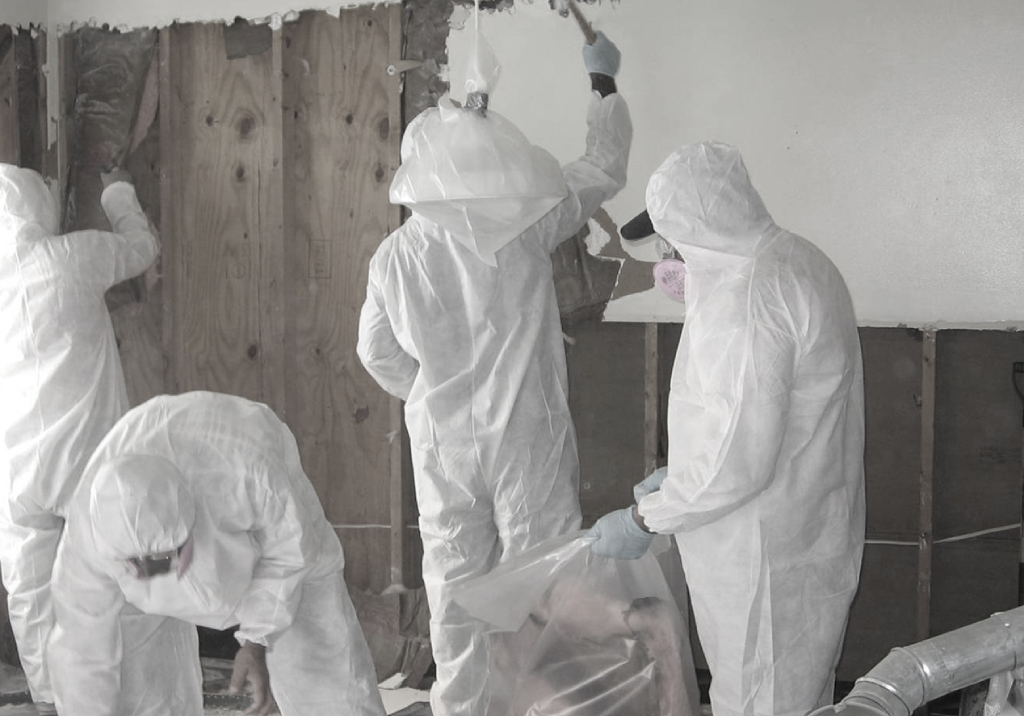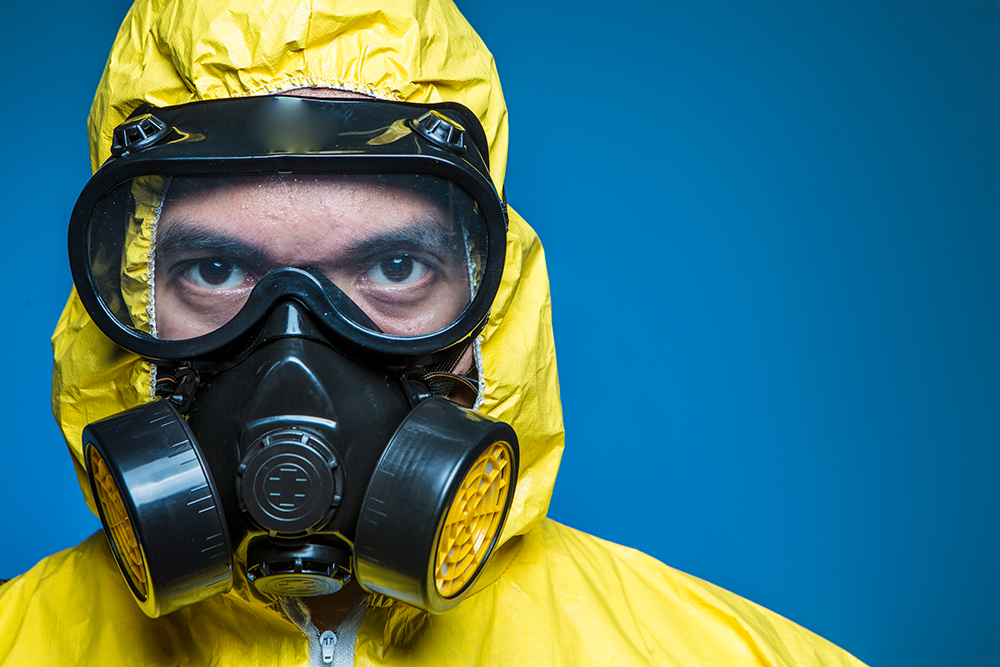Mold Remediation Providers: Safeguarding Your Building from Mold Damage
Mold Remediation Providers: Safeguarding Your Building from Mold Damage
Blog Article
Professional Biohazard Cleansing and Decontamination for Blood, Bodily Fluids, and Hazardous Materials
The potential health threats linked with direct exposure to biohazards emphasize the vital demand for thorough handling and comprehensive cleanup. As we navigate the detailed landscape of biohazard cleanup, recognizing the nuances of laws, conformity, and the specialized devices at play comes to be vital in making certain a thorough and risk-free decontamination process.
Health And Wellness Risks of Biohazard Direct Exposure
Direct exposure to biohazards poses significant wellness risks that can cause serious repercussions for people and areas alike. Biohazards include a vast array of biological compounds, including blood, physical liquids, mold and mildew, germs, viruses, and various other possibly transmittable materials. When individuals enter call with these biohazards, whether via crashes, inappropriate handling, or ecological exposure, they encounter the danger of having significant illnesses or conditions.
Among the primary health dangers connected with biohazard direct exposure is the transmission of contagious conditions. Bloodborne microorganisms such as HIV, liver disease B and C, and different germs can be existing in biohazardous products, posing a straight danger to human health. Breathing in airborne biohazards like mold spores or entering contact with infected surface areas can also cause respiratory concerns, allergic reactions, and various other negative wellness impacts.
In addition, biohazard direct exposure can have long-lasting wellness implications, with some conditions manifesting years after the initial call (Blood Cleanup). For that reason, it is essential to prioritize proper biohazard cleansing and purification to reduce these wellness dangers and ensure the safety and security of people and areas

Specialized Training for Biohazard Cleaning
When it pertains to dealing with biohazard cleanup successfully and securely, specialized training plays a basic duty in making certain correct purification treatments are adhered to. Biohazard cleaning needs certain knowledge and abilities to properly alleviate dangers related to bloodborne pathogens, bodily fluids, and dangerous materials. Experts learnt biohazard cleanup go through strenuous direction on just how to securely manage, remove, and take care of biohazardous products to avoid contamination and direct exposure.
Specialized training for biohazard clean-up covers a series of important topics, consisting of proper individual protective devices (PPE) use, bloodborne microorganism awareness, purification strategies, and contaminated materials disposal procedures. Individuals learnt biohazard clean-up are equipped with the essential knowledge to evaluate contamination degrees, recognize potential risks, and carry out suitable cleaning treatments in compliance with governing standards.
Continuous training and education are vital in the field of biohazard cleanup to stay upgraded on the current purification modern technologies, safety procedures, and laws. By buying specialized training, biohazard cleanup professionals can successfully react to emergency situation cleanup scenarios and guard both public health and wellness and the atmosphere.
Value of Proper Decontamination Methods
Making use of correct purification strategies is important in biohazard cleaning to efficiently eliminate dangerous materials and lessen wellness threats. Reliable decontamination not only ensures the elimination of visible traces of blood, bodily fluids, and various other biohazards yet also targets unnoticeable microorganisms that may pose serious health threats otherwise effectively eliminated. By adhering to rigid purification protocols, educated experts can considerably lower the danger of direct exposure to unsafe bacteria, infections, and microorganisms that can lead to infections or conditions.
Correct decontamination techniques include the use of customized tools and anti-bacterials that are especially created to reduce the effects of biohazards properly. Extensive cleansing and sanitation of contaminated locations are crucial to protect against the spread of virus and ensure a secure atmosphere for occupants. Furthermore, the right disposal of biohazardous waste following decontamination procedures is vital in protecting against contamination of various other surface areas or people.

Tools and Tools for Safe Clean-up
The correct devices and tools play an essential role in making sure the safe and effective cleaning of biohazardous materials. When handling blood, physical liquids, or harmful products, biohazard cleansing professionals depend on specialized equipment to minimize direct exposure risks and extensively sanitize the damaged area. Personal safety tools (PPE) such as handwear covers, goggles, coveralls, and masks are vital to learn this here now safeguard against direct contact with possibly contagious materials. Furthermore, biohazard cleansing packages containing anti-bacterials, absorbing materials, and biohazard bags are made use of to safely have and dispose of polluted things. Blood Cleanup.
Advanced cleaning tools like hospital-grade disinfectants, HEPA-filtered vacuums, and fogging machines are employed to disinfect surfaces and remove biohazards efficiently. Specialized tools such as sharps containers and biohazard garbage disposal containers are made use of to safely manage sharp things and biohazardous waste products. By using the best devices and tools, biohazard cleaning professionals can make sure an extensive cleaning procedure that prioritizes security and lessens health dangers for both workers and owners of the affected space.
Rules and Compliance in Biohazard Cleaning
Correct adherence to regulations and conformity standards is paramount in biohazard cleansing to make certain the safety and security of both workers and the setting. Government companies such as OSHA (Occupational Security and Health And Wellness Management) and the EPA (Epa) have actually established particular guidelines for biohazard cleanup procedures to lessen health and wellness dangers and ecological contamination. These guidelines cover a series of elements including the handling, transport, and disposal of biohazardous products, as well as the needed training and protective equipment needed for workers involved in the clean-up process.
Biohazard cleaning business must remain up-to-date with these regulations to assure that their operations fulfill the called for safety requirements. Failing to adhere to these policies can cause severe repercussions, consisting of penalties, lawsuit, and jeopardizing the wellness of people and the setting. By adhering to stringent regulations and compliance steps, biohazard cleansing firms can effectively alleviate risks and make sure navigate here a safe and extensive cleaning procedure for all celebrations involved.
Final Thought
In verdict, biohazard cleaning and decontamination need specific training, proper techniques, and adherence to guidelines. Exposure to blood, bodily liquids, and harmful materials postures substantial wellness threats, making it important to utilize the best equipment and devices for try this website safe cleanup. By complying with stringent protocols and standards, professionals can successfully minimize the dangers connected with biohazard exposure and guarantee the safety of both themselves and others.
As we browse the detailed landscape of biohazard clean-up, comprehending the nuances of laws, conformity, and the customized tools at play becomes necessary in making certain a thorough and risk-free decontamination procedure. (Blood Cleanup)
When it comes to dealing with biohazard cleanup effectively and securely, specialized training plays a fundamental duty in ensuring correct decontamination treatments are adhered to.Utilizing appropriate purification strategies is crucial in biohazard cleanup to properly minimize and eliminate unsafe materials health and wellness risks. Additionally, biohazard cleansing sets consisting of disinfectants, absorbent products, and biohazard bags are used to safely dispose and include of polluted items.
Government companies such as OSHA (Occupational Safety And Security and Wellness Management) and the EPA (Environmental Protection Company) have actually established specific guidelines for biohazard cleanup procedures to lessen health and wellness risks and environmental contamination.
Report this page